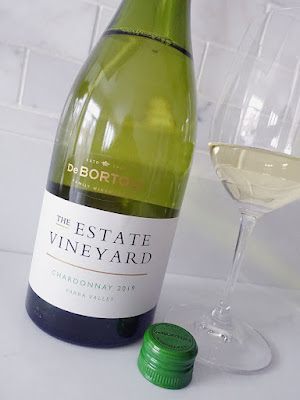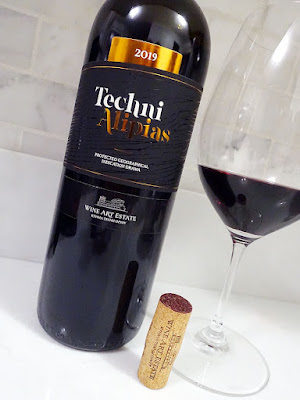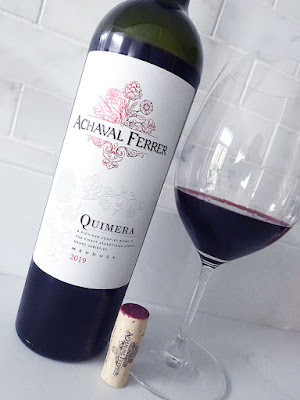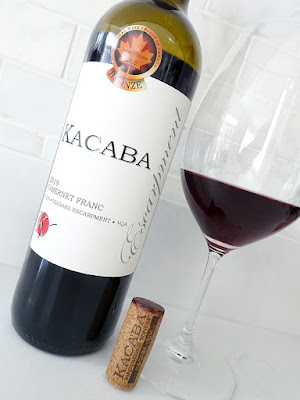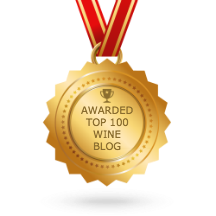red wine review is a lovely, organic red made with the relatively unknown Rubin varietal from Bulgaria. It is a brand-new arrival at the LCBO that landed on shelves across Ontario in last month's LCBO VINTAGES New Release Collection on .
It is produced by Terra Tangra, a winery that was established in 1999 in Bulgaria, one of the oldest wine-producing regions in the world. Terra Tangra is situated on the southwestern slopes of the Sakar Mountain, along the Maritsa River in the Thracian Plain, in southeastern Bulgaria.
Terra Tangra specializes in the production of selected red, white, and rosé wines of different and mostly international varieties, and across several ranges of boutique wines. All the wines are crafted using grapes from their own vineyards, which span across 350 hectares of land. The growing conditions to produce high-quality grapes are more than excellent, with the climatic conditions consisting of many sunny days throughout the year, constant wind, and sparse rainfall. Combining these conditions with the southern exposure of vineyards leads to high diurnal temperatures. The soil in these vineyards is shallow, with decomposed granite lying underneath. The terroir in the region has led experts to believe that the South Sakar region will become the most successful in Bulgaria.
Today, Terra Tangra's 350 hectares of vineyards are constantly under strict supervision by a team of oenologists and agronomists who determine the exact date to start harvest. All the grapes are harvested by hand into cassettes. To vinify their wines, Terra Tangra uses classic techniques with great attention to detail in order to preserve and extract the natural phenolic substances from the grapes, which in turn leads to memorable wines of character.
From their Black Label range, this red wine is crafted using 100% Rubin Bolgarskii (aka Rubin), a dark-skinned crossing of two renowned grape varieties - Nebbiolo and Syrah. Rubin is a hybrid grape variety that was created in the middle of the 20th century as part of efforts to develop new varieties suitable for Bulgaria's climate and terroir. Today, Rubin is grown across the Central European nations of Moldova, Romania, and Slovenia. However, it is in the village of Branitsa in southeastern Bulgaria where Rubin flourishes and expresses itself best. Rubin is a relatively early ripening variety that achieves good must weight, which ensures good alcohol levels to balance its ample tannins. The peppery and violet characteristics that Rubin displays can be attributed to Syrah. The grapes for this Rubin were grown on Terra Tangra's southwestern slopes of their Sakar Mountain Vineyard. After hand-harvesting the Rubin grapes, it underwent alcoholic fermentation, followed by ageing in barrel to further soften the tannins.
100% Rubin and certified organic. The fresh and fragrant, medium+ to medium-high intensity nose offers lovely, ripe dark fruited, blackberry, black pepper, black plum, and gentle cedary oak aromas accented with cassis and savoury earth notes. On the dry, medium+ to medium-full bodied palate the black plum flavours are layered over dark fruited blackberry, cassis, savoury earth, and gentle oak spice notes. It's all framed by fresh acidity and grippy, youthful, and well-structured tannins. The juicy mid-palate leads to a long, savoury, and stony mineral finish. A fine introduction to Rubin and a highly recommended buy! Score: 90+ pts
Other lovely wines by Terra Tangra can be ordered through their Agent - Rare Earth Wines.
It is produced by Terra Tangra, a winery that was established in 1999 in Bulgaria, one of the oldest wine-producing regions in the world. Terra Tangra is situated on the southwestern slopes of the Sakar Mountain, along the Maritsa River in the Thracian Plain, in southeastern Bulgaria.
Terra Tangra specializes in the production of selected red, white, and rosé wines of different and mostly international varieties, and across several ranges of boutique wines. All the wines are crafted using grapes from their own vineyards, which span across 350 hectares of land. The growing conditions to produce high-quality grapes are more than excellent, with the climatic conditions consisting of many sunny days throughout the year, constant wind, and sparse rainfall. Combining these conditions with the southern exposure of vineyards leads to high diurnal temperatures. The soil in these vineyards is shallow, with decomposed granite lying underneath. The terroir in the region has led experts to believe that the South Sakar region will become the most successful in Bulgaria.
Today, Terra Tangra's 350 hectares of vineyards are constantly under strict supervision by a team of oenologists and agronomists who determine the exact date to start harvest. All the grapes are harvested by hand into cassettes. To vinify their wines, Terra Tangra uses classic techniques with great attention to detail in order to preserve and extract the natural phenolic substances from the grapes, which in turn leads to memorable wines of character.
From their Black Label range, this red wine is crafted using 100% Rubin Bolgarskii (aka Rubin), a dark-skinned crossing of two renowned grape varieties - Nebbiolo and Syrah. Rubin is a hybrid grape variety that was created in the middle of the 20th century as part of efforts to develop new varieties suitable for Bulgaria's climate and terroir. Today, Rubin is grown across the Central European nations of Moldova, Romania, and Slovenia. However, it is in the village of Branitsa in southeastern Bulgaria where Rubin flourishes and expresses itself best. Rubin is a relatively early ripening variety that achieves good must weight, which ensures good alcohol levels to balance its ample tannins. The peppery and violet characteristics that Rubin displays can be attributed to Syrah. The grapes for this Rubin were grown on Terra Tangra's southwestern slopes of their Sakar Mountain Vineyard. After hand-harvesting the Rubin grapes, it underwent alcoholic fermentation, followed by ageing in barrel to further soften the tannins.
Tasting Note:
TERRA TANGRA BLACK LABEL RUBIN 2019 - Sakar Mountain Vineyard, PGI Thracian Valley, Bulgaria (#37744) (XD) - $21.95100% Rubin and certified organic. The fresh and fragrant, medium+ to medium-high intensity nose offers lovely, ripe dark fruited, blackberry, black pepper, black plum, and gentle cedary oak aromas accented with cassis and savoury earth notes. On the dry, medium+ to medium-full bodied palate the black plum flavours are layered over dark fruited blackberry, cassis, savoury earth, and gentle oak spice notes. It's all framed by fresh acidity and grippy, youthful, and well-structured tannins. The juicy mid-palate leads to a long, savoury, and stony mineral finish. A fine introduction to Rubin and a highly recommended buy! Score: 90+ pts
Other lovely wines by Terra Tangra can be ordered through their Agent - Rare Earth Wines.


